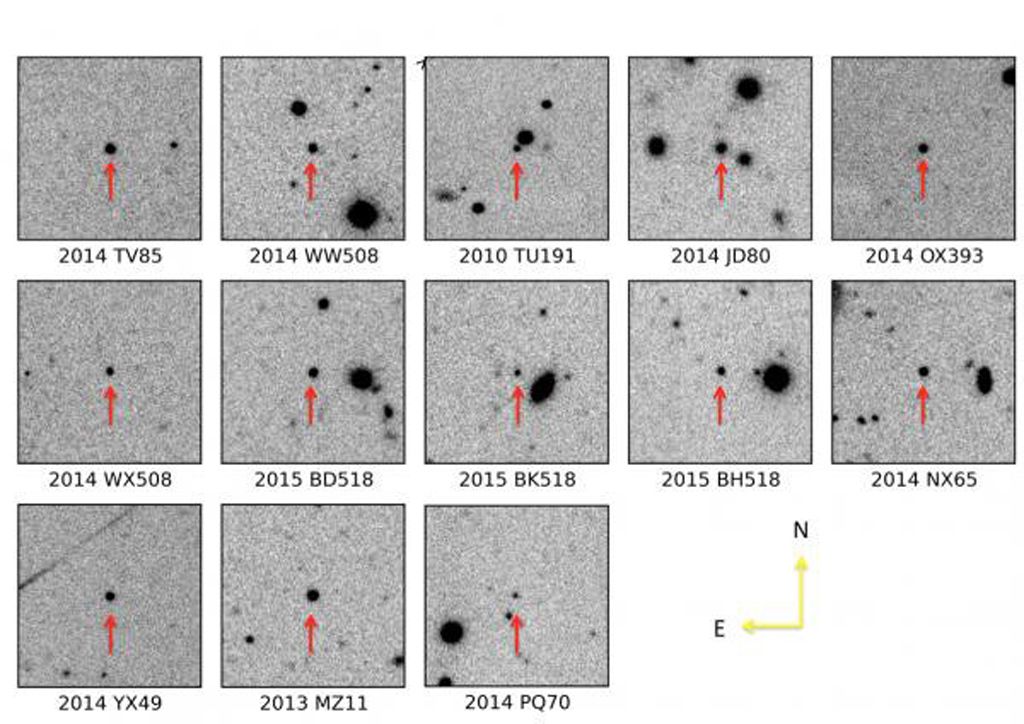Using the Gemini North telescope to look at a selection of centaurs found in PANSTARRS-1 data, scientists find 13 that do not have comet-like tails.

Back here in our solar system, researchers here at the Planetary Science Institute have had a bit of a breakthrough when it comes to understanding one of the more mythical beasts we’ve discovered — centaurs.
Centaurs are a strange combination of asteroid and comet, big lumps of rock and ice out between the orbits of Jupiter and Neptune that occasionally put on a show by growing comas. They’re a curious creature, and to that end, a team of researchers got time on the Gemini North telescope in Hawaii to look at a selection of centaurs found in PANSTARRS-1 survey data.
Here’s the funny bit — they weren’t looking for inactive centaurs; they were looking for those comet-like tails. And found exactly none of the 13 bodies they were able to observe. But sometimes, not finding what you are looking for can give you insight into the inner workings of a system. In this case, by finding all these inactive centaurs, the team found a potential reason for just how the active ones begin giving off gas and dust.
Some of our audience may be following how we’re voting in this year’s Mineral Cup. Now, I know this seems like a non-sequitur but bear with me here. Water ice is one of the competitors, and while it won the whole competition a couple of tournaments ago, its inclusion is not without controversy. But Beth will happily point out that water ice meets the standard definition of a mineral — it’s naturally occurring and solid, and it has a specific chemical composition and a defined crystalline structure.
Except when it doesn’t. It turns out that there is such a thing as amorphous water ice, where the structure isn’t quite crystalline and can trap a ton of gas in between water molecules. And centaurs may have ice mostly in that form, but as their orbits are shifted closer and closer due to gravitational interactions with the ice and gas giants of our solar system, at a certain point, that amorphous ice suddenly gains its defined crystalline structure, releasing all the trapped gas.
Lead author Dr. Eva Lilly explains: The escaping gas from the amorphous water ice builds up pressure, which can, in turn, open sinkholes or cause landslides exposing other ices that will sublimate and create visible coma. This pressure can be so great it could eject boulders or chunks of the Centaur, similarly to what was observed during the outburst of Centaur Echeclus in 2005.
This change in state isn’t predictable, though, which is what really makes centaurs different from comets. We don’t know when or how their orbits will shift to cause that water ice to completely crystallize. These bodies came from the Kuiper Belt and Oort Cloud, to begin with, and their interactions with our larger planets are not easily calculated. Plus, centaurs, like comets and asteroids, are small and difficult to find. That’s not going to stop scientists from looking and working to gain a further understanding of these mythical creatures.
More Information
- PSI press release
- “No Activity among 13 Centaurs Discovered in the Pan-STARRS1 Detection Database,” Eva Lilly et al., 2021 August 10, Planetary Science Journal
- This story was written for the Daily Space podcast/YouTube series. Want more news from myself, Dr. Pamela Gay, and Erik Madaus? Check out DailySpace.org.
This article was originally published on Medium.





